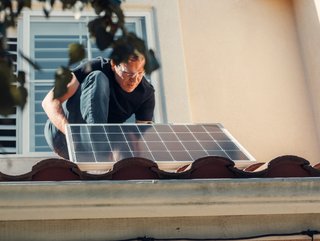McKinsey on how US can Advance the Clean Energy Transition

The US has a long-term strategy when it comes to playing out pathways to net zero by 2050.
Published by the United States Department of State and the United States Executive Office of the President in November 2021, the 65-page document sets out pathways to net-zero emissions by 2050 nationwide, as well as how the government plans to transform the energy system to this date and reduce other emissions apart from CO2. Benefits of climate action, removing carbon beyond 2050 and accelerating global climate progress is also detailed.
“We look at energy data on a daily basis, and it’s astonishing what’s happening,” the Executive Director of the International Energy Agency (IEA) Fatih Birol said. “Clean energy is moving faster than many people think, and it’s become turbocharged lately.”
In a recent McKinsey study, researchers reported that as the United States moves toward decarbonisation, states and their leaders will play a pivotal part in helping determine whether net zero is achieved — and whether the energy transition elevates communities to deliver a more prosperous future for all.
How can US states advance a successful clean-energy transition?
Off the back of 2023 research that outlined six critical action areas that could enable a more orderly transition, McKinsey estimates that it will take more than US$27 trillion of capital spending through 2050 (averaging out at around US$900 billion per year) to deploy US climate solutions at scale. Financing such a project — and at scale — will prove difficult, which is why McKinsey advocates that individual states explore new financing mechanisms, as well as investments from public and private capital to close investment gaps.
Ultimately, the report’s authors stress the importance of state leaders taking proactive measures to ensure successful and equitable clean-energy transitions. By doing so, they will not only influence their own regions, but facilitate live case studies that can be studied and subsequently adapted and adopted around the globe.
There are three key strategic steps these leaders can, and are advised to, take.
- Understand a state’s role in the energy transition: Leaders can consider several moves to gain a baseline understanding of the state’s current role in the energy transition, even if they are further along the process than other states.This will allow leaders to assess carbon footprint and the potential for progress.
- Develop/update decarbonisation pathways: There is a certain challenge and air of unpredictability about net-zero goal success, which is why McKinsey says leaders should develop decarbonisation pathways based on different scenarios.
- Coordinate with stakeholders on what it will take to be successful: This can be done by identifying, updating and deploy resources efficiently
The report also identifies four main roles leaders can play in the clean energy transition. These roles embody the multifaceted approach that can be taken to drive successful and equitable clean energy transitions.
The roles are:
- Convenor: State leaders can bring together a diverse array of stakeholders to develop emissions abatement and energy transition pathways.
- Planner: By developing integrated plans, leaders can set the overall direction for the state's clean-energy transition.
- Coordinator: In the role of a coordinator, state leaders work to streamline the planning and execution of infrastructure projects.
- Catalyst: Leaders at catalysts can incentivise private investment by leading on public financing and exploring public–private partnerships.
You can read more from McKinsey’s report here.
******
Make sure you check out the latest edition of Energy Digital and also sign up to our global conference series - Sustainability LIVE 2024
******
Energy Digital is a BizClik brand.






